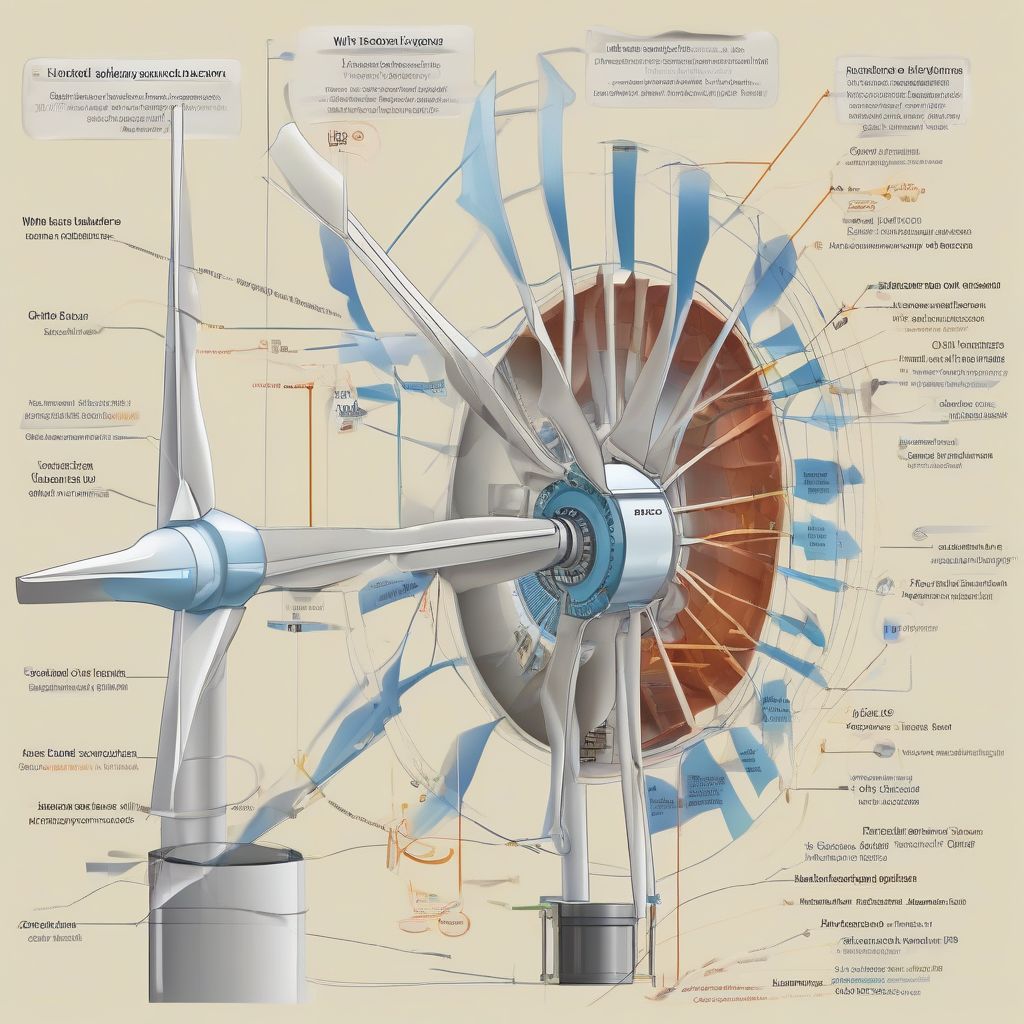Have you ever felt the raw power of the wind whipping through your hair and wondered if we could harness that energy? It turns out, we can, and have been doing so for centuries! From the earliest windmills grinding grain to the towering turbines powering our modern world, the journey of wind energy is a fascinating one. This article delves into the science behind how wind energy is harnessed and converted into electricity, exploring the inner workings of wind turbines and the future of this vital renewable resource.
From Breeze to Electricity: The Mechanics of Wind Power
The basic principle behind wind energy is surprisingly simple: capturing the kinetic energy of moving air and converting it into a usable form of energy, electricity. This process relies on a sophisticated piece of technology: the wind turbine. Let’s break down how it works.
The Anatomy of a Wind Turbine
A wind turbine is essentially a sophisticated windmill. Key components include:
- Rotor: The rotor consists of two or three blades connected to a hub. These blades, often made of fiberglass or carbon fiber, are aerodynamically designed like airplane wings. When wind passes over them, it creates a difference in air pressure, causing the rotor to spin.
- Nacelle: Sitting atop the tower, the nacelle houses the gearbox, generator, and other crucial components. It’s the heart of the wind turbine.
- Gearbox: This increases the rotational speed of the rotor to a level suitable for the generator.
- Generator: This is where the magic happens. The spinning rotor shaft turns the generator, which uses electromagnetic induction to convert the mechanical energy into electrical energy.
- Tower: The tower supports the nacelle and rotor, lifting them high into the air where wind speeds are greater and more consistent.
The Conversion Process
- Wind Capture: The wind blows across the rotor blades, creating lift and causing them to rotate.
- Rotation and Gearbox: The rotating rotor shaft turns a series of gears within the gearbox, increasing the rotational speed.
- Electricity Generation: This high-speed rotation drives the generator, which produces electricity.
- Transmission: The electricity generated is then sent down the tower and into the electrical grid, ready to power our homes and businesses.
 Wind Energy Conversion to Electricity
Wind Energy Conversion to Electricity
Types of Wind Turbines and Their Applications
Wind turbines come in various sizes and configurations, each suited for different applications:
Onshore Wind Turbines
These are the most common type, installed on land. They range from small turbines for individual homes to large utility-scale turbines that feed power into the electrical grid.
Offshore Wind Turbines
Located in bodies of water, these turbines can capture stronger and more consistent winds. While installation and maintenance are more complex, they offer higher energy yields.
Advantages and Disadvantages of Wind Energy
Like any energy source, wind power has its pros and cons.
Advantages:
- Renewable: Wind is a naturally replenishing resource, making it a sustainable energy source.
- Clean: Wind energy generates no greenhouse gases or other pollutants.
- Cost-Effective: The cost of wind energy has decreased significantly in recent years, making it competitive with fossil fuels in many regions.
Disadvantages:
- Intermittency: Wind is not always blowing, which can affect the reliability of wind power.
- Visual Impact: Some people find wind turbines visually unappealing.
- Noise: Turbines can generate noise, although modern designs have significantly reduced this issue.
The Future of Wind Energy
Wind energy is a rapidly growing sector of the renewable energy industry. Advancements in turbine technology, including larger rotors and more efficient generators, are constantly improving the efficiency and cost-effectiveness of wind power. Offshore wind farms are also gaining momentum, unlocking the vast potential of wind resources over the oceans.
“The future belongs to renewable energy sources like wind and solar. Investing in these technologies is not just an environmental imperative, but also a smart economic strategy.” – Hypothetical quote by a leading energy expert.
Conclusion
From the simple mechanics of a rotating blade to the complex engineering of offshore wind farms, harnessing wind energy is a testament to human ingenuity. Wind power offers a clean, sustainable, and increasingly affordable alternative to fossil fuels, playing a vital role in the transition to a greener future. While challenges remain, the future of wind energy is bright, promising a world powered by the very air we breathe. What are your thoughts on the role of wind energy in our future? Share your comments below and let’s continue the conversation!



